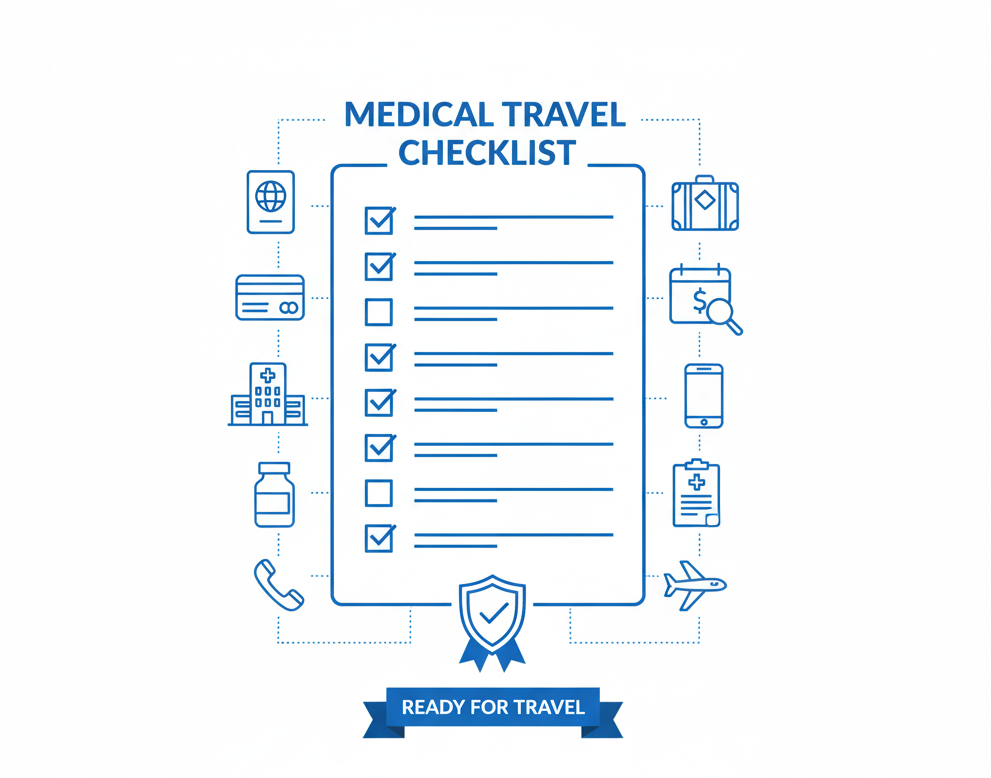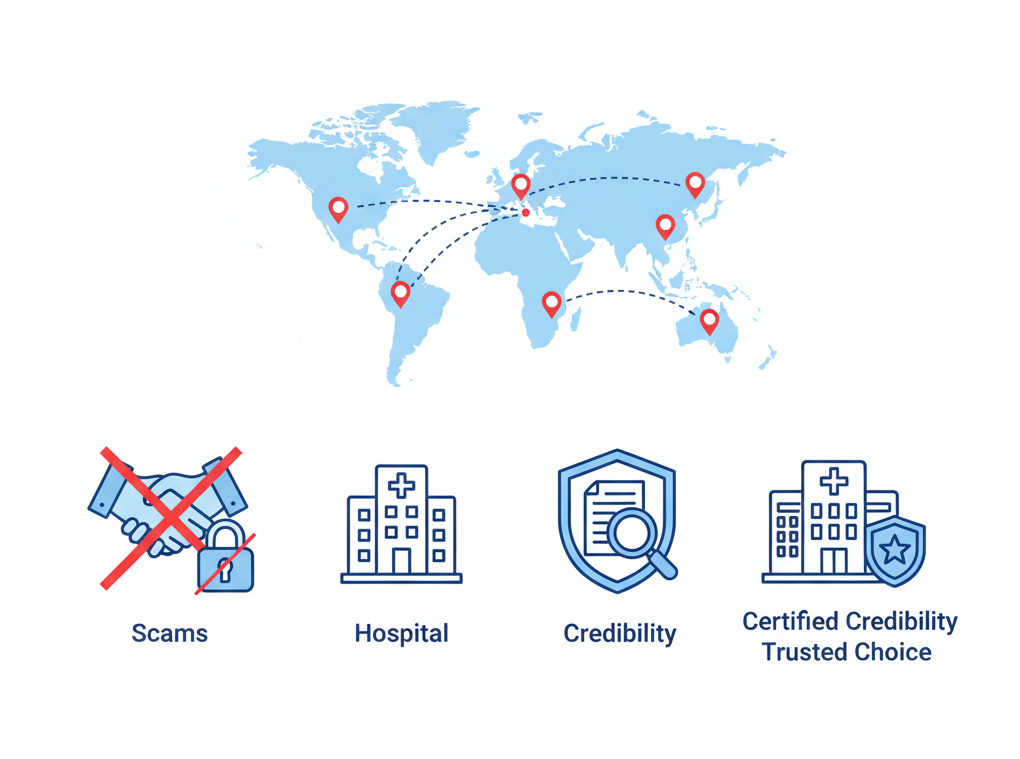
Comparing Medical Costs Globally: How to Save Thousands
Healthcare expenses have become one of the most significant financial challenges worldwide. In 2025, with medical costs soaring due to factors like aging populations, advanced technologies, and chronic diseases, patients and families are looking beyond borders to access affordable, quality care. Medical tourism offers an excellent avenue to save thousands—sometimes tens of thousands of dollars—on critical medical treatments by seeking care in countries with lower costs but excellent healthcare standards.
This comprehensive guide explores global disparities in medical costs, factors influencing pricing, country-specific savings potentials, and actionable tips to optimize medical tourism benefits effectively.
The Global Healthcare Cost Landscape: A 2025 Overview
Worldwide, healthcare expenditure growth remains a pressing economic and social issue. The 2025 Global Medical Trends Survey predicts average global medical cost inflation hitting 10.4%, influenced by:
-
Growing elder demographics needing complex care.
-
Increasing prevalence of lifestyle-related chronic conditions.
-
Integration of cutting-edge and often costly medical technologies.
-
Rising administrative and insurance compliance costs.
However, these costs vary drastically by region. For example:
-
The U.S. leads with healthcare spending exceeding $13,000 per capita annually, reflecting high labor costs, pharmaceutical pricing, advanced infrastructure, and administrative overhead.
-
European countries tend to spend between $5,000 and $9,000 per capita, supported by universal healthcare systems and negotiated pricing.
-
Many Asian, Latin American, and Eastern European nations have per capita health spending under $2,000, leveraging lower labor costs and varied healthcare system structures.
These disparities translate into significant price disparities for identical procedures, creating opportunities for medical tourists to access affordable care abroad.
Why Do Medical Costs Vary So Much?
Labor and Operational Costs
One of the primary cost drivers is labor expenses. In countries like India, Mexico, and Thailand, healthcare professionals earn considerably less than their Western counterparts, significantly reducing costs.
Moreover, operational costs—including building maintenance, medical supplies, pharmaceuticals, and administrative expenses—align with the local cost of living, lowering the overall price of treatment in these markets.
Healthcare System Structures
Public healthcare subsidies, insurance frameworks, and malpractice insurance also impact pricing. For instance, government-subsidized hospitals in some countries can provide treatment below market rates, while legal frameworks in others can drive up malpractice insurance premiums.
Market Competition and Medical Tourism Focus
Countries aggressively investing in medical tourism infrastructure often offer competitive rates and bundled packages including surgery, accommodation, transportation, and post-op care to attract international patients.
Typical Cost Ranges and Savings by Procedure
Here is a detailed cost comparison for popular medical procedures reflecting 2025 data, highlighting potential patient savings across several major medical tourism destinations:
| Medical Procedure | Typical U.S./UK Cost | Estimated Cost Abroad | Estimated Savings (%) | Top Affordable Destinations |
|---|---|---|---|---|
| Dental Implants (per tooth) | $3,000+ | $700 - $1,000 | 65–75% | Mexico, Turkey, Colombia |
| Rhinoplasty (Nose Surgery) | $8,000+ | $2,500 - $4,000 | 50–70% | Thailand, South Korea, Mexico |
| Liposuction (per area) | $4,000 | $1,200 - $1,800 | 55–70% | Brazil, Thailand, Mexico |
| In Vitro Fertilization (IVF) | $15,000+ | $3,000 - $6,000 | 60–80% | Mexico, Spain, India |
| Knee Replacement Surgery | $35,000+ | $7,000 - $12,000 | 60–75% | India, Thailand, Mexico |
| Hair Transplant (FUE) | $7,000+ | $1,800 - $3,000 | 60–80% | Turkey, India, South Korea |
These savings often come with Western-trained surgeons, JCI-accredited hospitals, and cutting-edge medical technology, ensuring quality alongside affordability.
Leading Medical Tourism Destinations for Cost-Effective Care in 2025
India
India remains a dominant player with costs averaging 60-80% below those in Western countries for complex procedures such as cardiac surgeries, oncology treatments, orthopedic surgeries, and fertility care. Major metro cities including Mumbai, Delhi, and Bangalore host state-of-the-art hospitals with JCI accreditation.
Thailand
Renowned especially for cosmetic and dental procedures, Thailand combines medical excellence at 50-70% cost savings with integrated wellness tourism. Bangkok, Phuket, and Chiang Mai are key hubs for international patients seeking affordability and high service standards.
Mexico
Proximity to the U.S. and Canada, along with lower costs (50-70% savings), have made Mexico a favorite for dental care, bariatrics, and cosmetic surgeries. Major hospitals in Tijuana, Cancun, and Mexico City maintain international accreditation and bilingual staff.
Other Countries
Turkey, Malaysia, Colombia, Costa Rica, and South Korea are also prominent destinations, each offering competitive pricing and specialty care areas at significant discounts compared to Western healthcare systems.
Strategies for Maximizing Savings on Medical Care Abroad
-
Shop Around and Compare
Use online platforms and facilitators to compare prices, accreditation status, and patient reviews of hospitals in different countries. -
Request Detailed Quotes
Get comprehensive cost breakdowns including surgeon fees, anesthesia, hospital stay, post-operative care, medications, and any hidden costs such as airport transfers or diagnostics. -
Select Package Deals
Many providers offer bundled packages that combine treatment, accommodation, and rehabilitation—often at lower aggregate costs. -
Include Travel and Recovery Costs in Your Budget
Ensure you calculate airfare, accommodations, meals, and recovery time off work to assess total savings realistically. -
Use Accredited Medical Tourism Facilitators
Facilitators can negotiate prices, arrange logistics, and offer support, improving coordination and often lowering your overall cost. -
Verify Insurance Coverage
Consult with your health insurance to determine overseas coverage and obtain supplementary insurance if needed to protect your investment and health.










